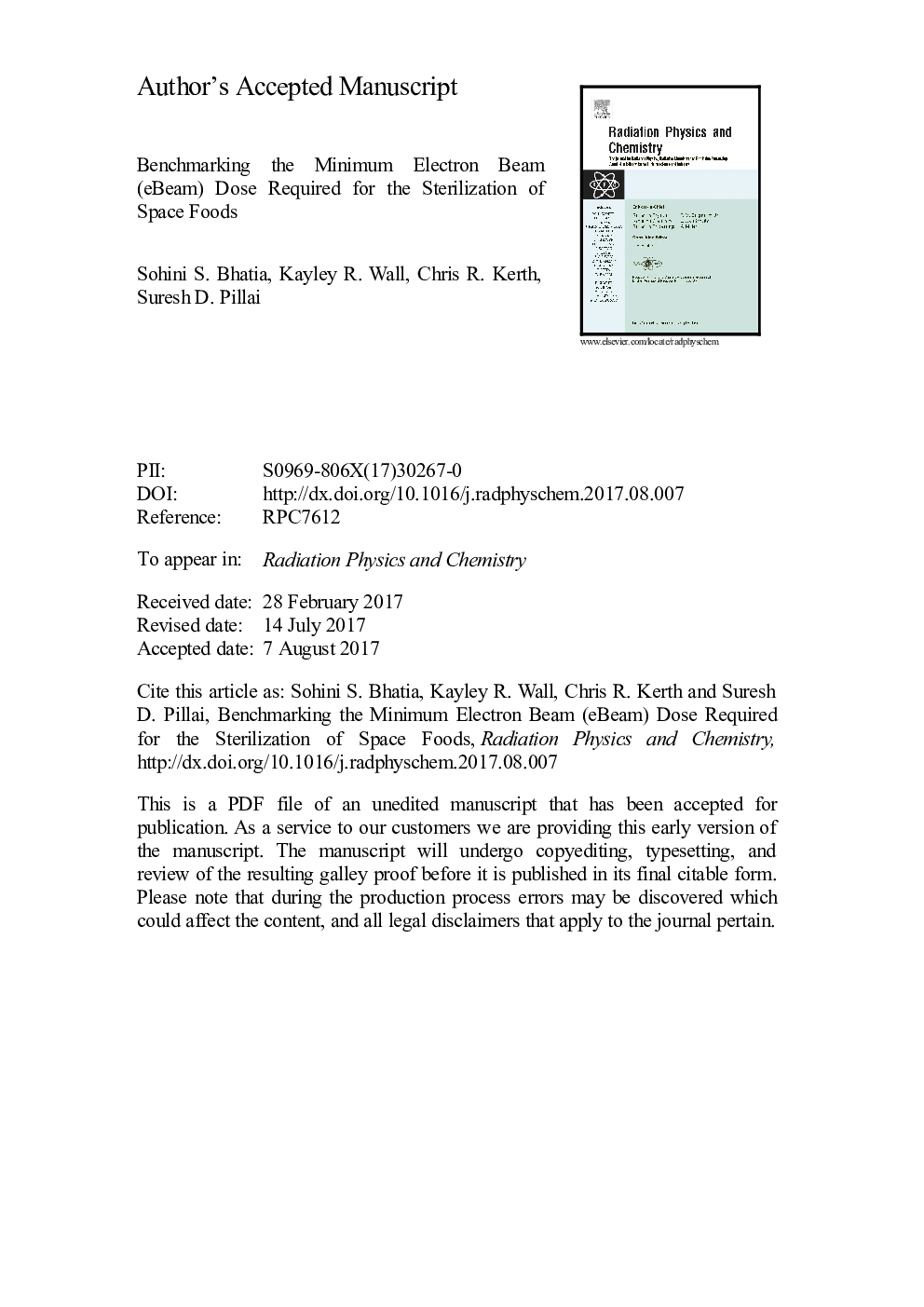| Article ID | Journal | Published Year | Pages | File Type |
|---|---|---|---|---|
| 8251667 | Radiation Physics and Chemistry | 2018 | 25 Pages |
Abstract
As manned space missions extend in length, the safety, nutrition, acceptability, and shelf life of space foods are of paramount importance to NASA. Since food and mealtimes play a key role in reducing stress and boredom of prolonged missions, the quality of food in terms of appearance, flavor, texture, and aroma can have significant psychological ramifications on astronaut performance. The FDA, which oversees space foods, currently requires a minimum dose of 44Â kGy for irradiated space foods. The underlying hypothesis was that commercial sterility of space foods could be achieved at a significantly lower dose, and this lowered dose would positively affect the shelf life of the product. Electron beam processed beef fajitas were used as an example NASA space food to benchmark the minimum eBeam dose required for sterility. A 15Â kGy dose was able to achieve an approximately 10Â log reduction in Shiga-toxin-producing Escherichia coli bacteria, and a 5Â log reduction in Clostridium sporogenes spores. Furthermore, accelerated shelf life testing (ASLT) to determine sensory and quality characteristics under various conditions was conducted. Using Multidimensional gas-chromatography-olfactometry-mass spectrometry (MDGC-O-MS), numerous volatiles were shown to be dependent on the dose applied to the product. Furthermore, concentrations of off -flavor aroma compounds such as dimethyl sulfide were decreased at the reduced 15Â kGy dose. The results suggest that the combination of conventional cooking combined with eBeam processing (15Â kGy) can achieve the safety and shelf-life objectives needed for long duration space-foods.
Related Topics
Physical Sciences and Engineering
Physics and Astronomy
Radiation
Authors
Sohini S. Bhatia, Kayley R. Wall, Chris R. Kerth, Suresh D. Pillai,
